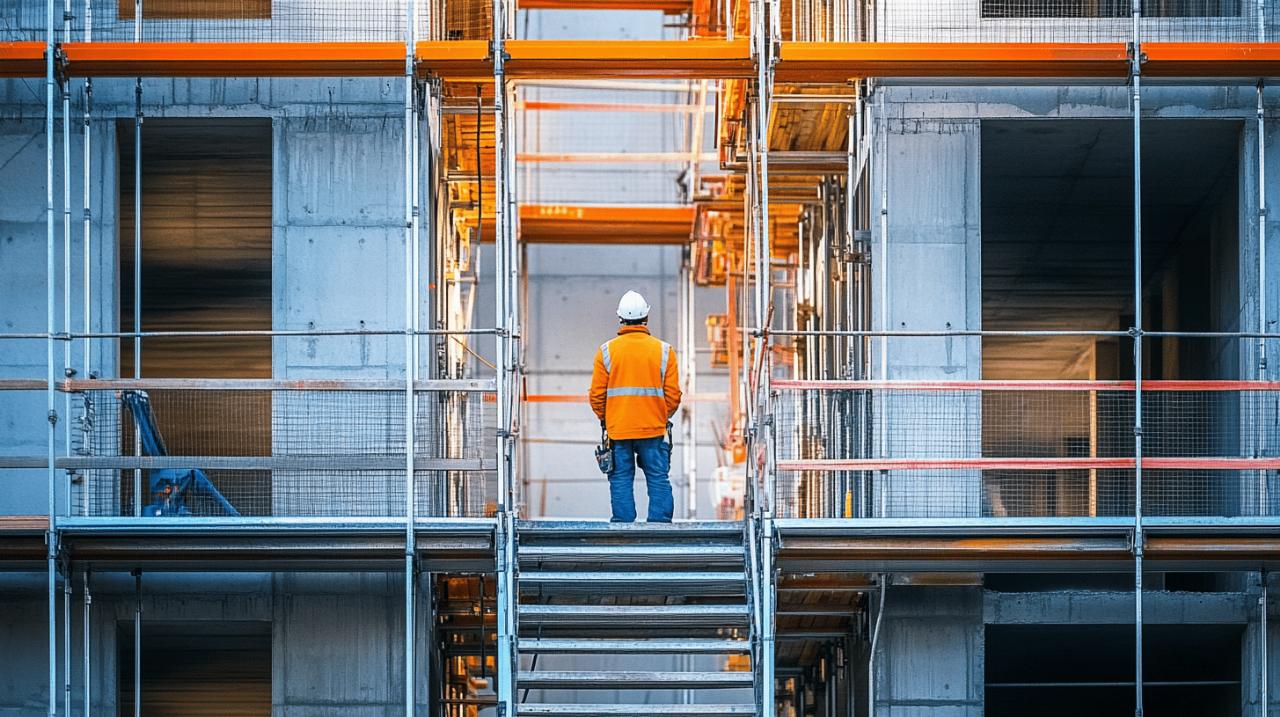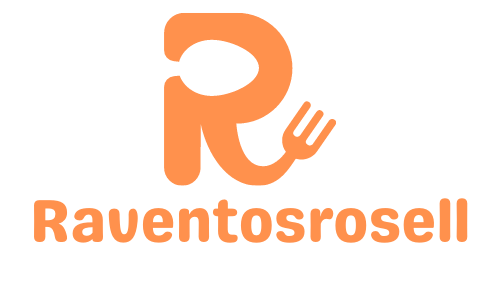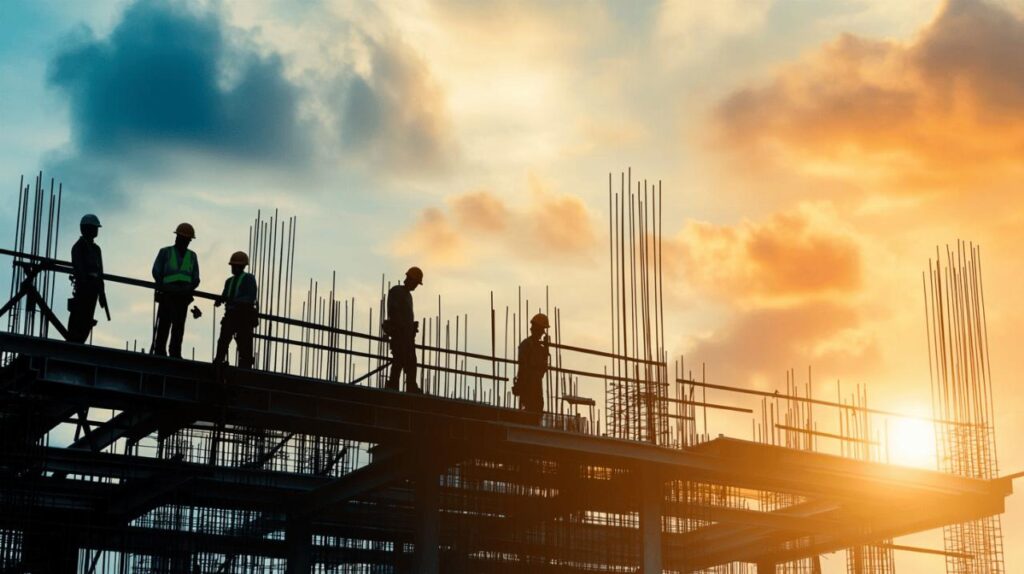Construction site panels serve as essential communication tools on building sites, conveying critical information while also representing your brand to the public. Designing effective panels requires a strategic approach that balances clarity, visual impact, and functional requirements. This guide explores proven techniques for creating construction site panels that communicate effectively while enhancing your project’s professional image.
Fundamentals of Clear Communication in Construction Signage
Communication clarity forms the foundation of effective construction site panels. The primary purpose of these panels is to convey information quickly and unambiguously to workers, visitors, and passersby. A panel that fails to communicate clearly might as well not exist. According to construction industry best practices highlighted in the 2022 guide on construction site panels, these elements can significantly improve a company’s image while serving their practical purpose. Visitors to https://www.criterioselecta.it/ can find additional resources on professional presentation for construction businesses.
Establishing visibility through text hierarchy and contrast
The legibility of your construction panels depends largely on creating strong visual hierarchy and contrast. Important information should stand out through size, weight, and colour differentiation. For maximum readability, experts recommend using dark text on light backgrounds or vice versa, with a contrast ratio of at least 7:1. Sans-serif fonts at appropriate sizes ensure text remains legible from typical viewing distances. The construction industry’s projected growth—with revenue expected to more than double from 2020 to 2030 according to Statista—means more sites requiring clear signage that can be understood by an increasingly diverse workforce.
Implementing standardised symbols and messaging conventions
Standardised symbols transcend language barriers and communicate instantly. Construction site panels should incorporate universally recognised safety icons and pictograms that convey messages regardless of the viewer’s native language. These symbols have become even more important with the internationalisation of construction crews. The panels used at innovation centres like the newly opened Paris Innovation Losserand demonstrate how standardised visual language can effectively communicate across cultural boundaries. Consistent placement of safety information, warnings, and directional guidance creates an intuitive system that site visitors and workers can navigate without confusion.
Strategic Use of Visuals and Graphics
Visual elements on construction site panels serve both functional and aesthetic purposes. They capture attention, communicate information rapidly, and create memorable impressions that text alone cannot achieve. Companies that supply construction site materials such as heras fence covers, crowd barrier covers, banners, hoardings, and feather flags understand that visual impact drives effectiveness.
Selecting impactful images that convey information instantly
The images chosen for construction panels should communicate essential information within seconds. Photographs showing proper safety procedures, renderings of the completed project, or diagrams illustrating site navigation serve practical purposes while engaging viewers. When selecting images, consider how they will appear from typical viewing distances and under various lighting conditions. High-contrast, simplified visuals tend to work better than complex, detailed images that require close inspection. For companies working on commercial, industrial, and residential projects, tailoring imagery to the specific context enhances relevance and impact.
Balancing Text and Visual Elements for Maximum Comprehension
Effective construction panels strike a careful balance between textual and visual information. Too much text overwhelms viewers and discourages reading, while too few words may leave critical information uncommunicated. The best panels use visuals to attract attention and convey the main idea, with text providing necessary details. This approach supports both quick scanning and more detailed information gathering. For construction companies implementing advanced technologies like Structural Insulated Panels or working toward Passivhaus standards, this balanced approach helps communicate complex concepts simply.
Crafting concise and impactful messaging
The messaging on construction site panels must be brief yet comprehensive. Every word should earn its place, contributing meaningful information without unnecessary elaboration. This principle applies whether the panel communicates safety requirements, project details, or company information.

Writing techniques for brief yet informative text
Effective panel copy uses active voice, present tense, and direct language. Headlines should be five words or fewer whenever possible, capturing the essence of the message. Body text should be limited to short, clear sentences that avoid jargon and technical terms unfamiliar to the general public. When explaining complex concepts like energy efficiency benefits of Structural Insulated Panels or promoting services like professional cleaning with liability insurance, focus on the most relevant benefits rather than exhaustive details. Digital sales ecosystems and e-commerce business models often use similar principles of concise messaging that construction signage can adopt.
Testing message clarity from typical viewing distances
Before finalising construction panel designs, test their legibility from realistic viewing distances. Text that seems perfectly clear when viewed up close may become illegible from several metres away. Conduct field tests by printing sample panels and viewing them from the distances and angles that reflect real-world conditions. Consider the average walking speed of pedestrians passing the site and ensure messages can be absorbed in the brief moments available. For companies offering a price beat guarantee of 10%, ensuring this competitive advantage is clearly visible from appropriate distances can significantly impact business acquisition.
Prioritising safety information on construction panels
Safety information must take precedence over all other content on construction site panels. Clear communication of hazards, required protective equipment, and emergency procedures can prevent accidents and potentially save lives.
Highlighting critical warnings through design elements
Critical safety warnings deserve distinctive design treatment that sets them apart from other information. Use established safety colours—red for prohibition, yellow for caution, blue for mandatory actions, and green for emergency information—in accordance with international standards. Placing safety information at eye level or slightly above increases the likelihood it will be noticed. Bold borders, larger text, and recognisable safety symbols enhance visibility further. For construction sites implementing advanced technologies like IoT monitoring in refrigerated storage areas, specific safety protocols should be prominently featured.
Creating intuitive navigation systems for emergency information
In emergencies, people need to locate critical information instantly. Develop a consistent system for organising emergency information across all site panels, placing it in predictable locations. Use directional indicators and maps that remain clear even under stress. Numbering panels sequentially helps emergency responders locate specific areas quickly. For construction projects with specific religious or cultural considerations, such as those following Sharia compliance for Halal leasing arrangements, emergency information should be accessible to all while respecting cultural sensitivities.
Incorporating brand identity in site signage
Construction site panels represent significant branding opportunities. They transform necessary safety and information displays into powerful marketing tools that build brand recognition and communicate company values.
Maintaining brand consistency whilst ensuring regulatory compliance
Effective construction panels balance brand expression with regulatory requirements. While safety information must follow prescribed formats, areas of the panel not governed by regulations offer opportunities for brand expression. Develop templates that incorporate required elements in standardised positions while allowing brand elements to occupy remaining space. This systematic approach ensures compliance while maintaining visual consistency. Businesses offering bespoke consultancy services, like Criterio Selecta, understand that brand consistency across all touchpoints reinforces professionalism and builds trust.
Leveraging Corporate Colours and Logos for Brand Recognition
Strategic use of corporate colours and logos transforms functional panels into brand ambassadors. Colour psychology plays a significant role in how viewers perceive your brand, with blue suggesting trustworthiness, green conveying environmental consciousness, and orange suggesting innovation. When applying corporate colours to construction panels, ensure sufficient contrast for legibility while maintaining brand recognition. For companies participating in industry events like the Salon Ouest Industries opening in June, consistent branding between exhibition materials and site panels reinforces recognition.
Environmental Considerations for Panel Design and Placement
Construction site panels must withstand environmental challenges while fulfilling their communication functions. Material selection and strategic placement significantly impact panel effectiveness and longevity.
Adapting Panel Materials and Designs for Weather Conditions
Panel materials should match the expected environmental conditions and project duration. For short-term projects or indoor applications, lightweight materials may suffice, while long-term exterior installations require weather-resistant options. UV-resistant inks prevent fading in sunlight, while lamination protects against moisture damage. Anti-graffiti coatings may be worthwhile in urban settings. When designing panels for sites implementing energy-efficient building technologies like SIPs, which reduce heat loss and cold bridging, the signage materials should similarly demonstrate environmental consciousness.
Determining Optimal Panel Locations for Visibility and Impact
Strategic placement maximises panel effectiveness. Consider natural sight lines, traffic flow patterns, and potential obstructions when determining locations. Panels should be visible without creating hazards or impeding movement. Entrance areas present prime opportunities for company branding and project information, while safety information belongs at relevant work zones. For construction sites spanning commercial, industrial, and residential areas, panel placement should adapt to each zone’s specific viewing contexts while maintaining overall consistency. The principles of site assessment and zoning that guide efficient construction also apply to effective panel placement.

